Not many gangsters have monuments built in their honor. However, if you were to travel to the Flamingo Hotel in Las Vegas, you would find one dedicated to Bugsy Siegel.
Siegel was a prominent member of the Jewish mob throughout the 1930s and 1940s. He was an ally of fellow Jewish gangster Meyer Lansky and, together, they established close ties to the New York Mafia governed by The Commission. Their criminal organizations and several others were often grouped together as a loose confederation which the media dubbed the National Crime Syndicate. Many of the most violent actions of this syndicate, particularly mob hits, were often carried out by a ruthless group which had been co-founded by Bugsy Siegel, the infamous Murder, Incorporated.
Siegel once admitted to a real estate developer that he killed over a dozen men. He had been involved in bootlegging during Prohibition and then in gambling, extortion, and prostitution after it was repealed. And yet, the legacy by which he is primarily remembered today has nothing to do with that. He is regarded as a smart businessman, even a visionary by some, who looked at a desert wasteland and saw the potential to turn it into one of the biggest gambling destinations in the world.
Even today, Bugsy Siegel is often called “the man who invented Las Vegas,” although, as we will soon find out, this name is not accurate. But even so, Bugsy Siegel was, undoubtedly, one of America’s most notorious mobsters and played a huge role in the history of Sin City.
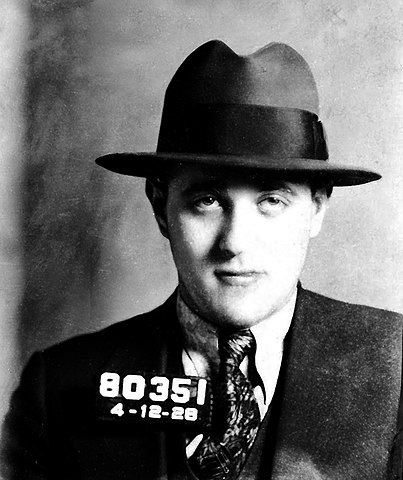
Early Years
Benjamin Siegel was born on February 28, 1906, in Brooklyn, New York, to Max and Jennie Siegel, a pair of poor Jewish immigrants who came to America from Galicia, a region of the Austro-Hungarian Empire which is now part of Ukraine. His nickname of “Bugsy” or “Bugs” came later, during his mobster years, but for the sake of consistency, we’re going to call him that from the beginning. Allegedly, other gangsters came up with it in reference to his quick and violent temper, because he was “crazy as a bedbug.” Siegel, however, hated the nickname, likely because the mention of “bedbugs” reminded him of his poor childhood raised in squalor, and most people who called him “Bugsy” to his face risked finding out exactly how he earned the moniker.
Unsurprisingly, young Ben wanted to escape his life of poverty as soon as possible, and like many other teenagers who resided in the poor, violent neighborhoods of Brooklyn, he saw crime as the quickest way of accomplishing his goal. By the time he was around 14 years old, Bugsy already had a gang of hoodlums and even worked his first extortion racket. He would go up to pushcart peddlers who sold various trinkets out of their carts and demanded payment in exchange for his protection services. If they refused, he would douse their carts in kerosene and threaten to light the whole thing on fire.
It was around this time that Siegel started associating with other future notable mobsters. One of the guys in his gang was Moe Sedway, who would go on to become an important lieutenant in the Jewish Mob, and would continue to look after the mob’s interests in Las Vegas after Siegel’s death. But Bugsy’s criminal career took a significant turn in 1918, when he met another tough Jewish thug named Meyer Lansky.

The exact story of how the two became friends has never been established with certainty, but the popular version says that Lansky saved Siegel’s life during a craps game. As Lansky was coming home from school one day, he saw a bunch of other people playing dice on a street corner, with Siegel among them. A fight broke out, and someone knocked Bugsy to the ground and a pistol fell out of his coat. The other player picked up the gun, aimed it at Siegel and was getting ready to shoot, but Lansky jumped in and knocked the other guy over. Right then, police whistles started ringing through the air, so everybody ran for the hills. Siegel and Lansky got away together and became close friends.
Soon afterwards, the two formed the Bugs and Meyer Mob which would go on to become a powerful force in New York’s Lower East Side. Lansky was not known to be a particularly violent man and usually preferred to delegate the dirty work, so he was considered the brains of the operation while Siegel was the brawn. Initially, the members of the mob united together to ensure a strong Jewish criminal front against the rise of Italian and Irish gangs. However, Lansky was not one to pass up good business opportunities, so his outfit soon started having dealings with Italian gangs, particularly that of an up-and-coming mobster named Charles “Lucky” Luciano.
Once Prohibition came in, the Bugs and Meyer Mob started making a lot of money from bootlegging, in addition to the traditional gambling, car theft, robbery, and extortion rackets. The gang certainly did not shy away from murder, either, and developed a particularly ruthless and violent reputation. In fact, the Bugs and Meyer Mob started to become the go-to source for murder-for-hire services, and as such came to be regarded as the precursor to Murder, Incorporated.
The Syndicate Is Born
Bugsy Siegel was rising through the ranks of America’s criminal underground during a period marked by turmoil, violence, and shifting allegiances. There were a lot of turf disputes, which led to a lot of bloodshed, which, in turn, created unwanted attention from the police and the media. And that didn’t help anyone. To try and resolve this, prominent criminal figures from all over the country gathered in one place to see if they can work things out – the Atlantic City Conference held between May 13-16, 1929, and hosted by Atlantic City political boss Enoch “Nucky” Johnson, the man who served as the basis for Nucky Thompson, the main character from Boardwalk Empire.
This was considered the first crime summit to take place in the United States, the first of only a handful that we know about. Everyone of importance was in attendance. There was the Chicago Outfit headed by Al Capone; the Jewish mob from Philly, the Purple Gang from Detroit, representatives from Kansas City, Boston, Cleveland, and New Orleans. Unsurprisingly, New York was the region best represented – not only were there lieutenants from all the Mafia families, but also the Irish mob, the New Jersey mob, and the gang led by Dutch Schultz. Meyer Lansky was one of the men who organized the whole thing so, of course, he was there, and he was accompanied by Bugsy Siegel to represent their own Bugs & Meyer Mob.
The general idea being promoted at the conference was that gang violence was bad for business for everyone, but the attention mainly focused on two ongoing disputes. First there was the one in Chicago – the infamous St. Valentine’s Day Massacre had only occurred a few months prior and it brought more attention to organized crime than any previous event. For his part, Al Capone said that he was willing to live and let live, although, of course, this was after he had already crippled his rival organization led by Bugs Moran. The fact that nobody from Moran’s outfit even attended the conference was very indicative of the current power dynamic in Chicago, suggesting that everyone realized that the city was Capone’s and any further serious turf disputes were unlikely.
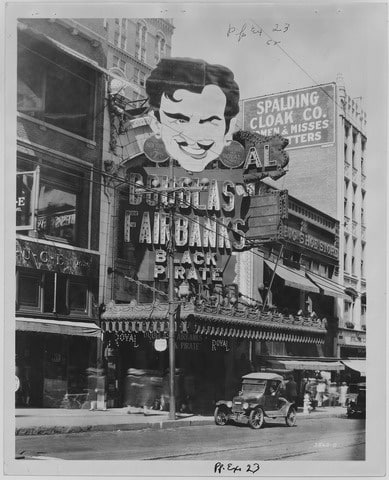
The same could not be said for New York City. Back then, there was still a capo di tutti capi, the so-called “boss of all bosses” who claimed dominion over all the Mafia families of the city. That was the way it was done in the old country, but the times they were a-changin’. Those who attended the conference understood that the old ways could not work forever and that as long as one man would rule alone at the top, there would be another one gunning for his head.
This is, in fact, exactly what was going on in New York at the time. Two men were vying for the position of capo dei capi – one was Giuseppe Masseria, known as “Joe the Boss,” and the other was Salvatore Maranzano, in a conflict known as the Castellammarese War. Both Masseria and Maranzano were considered Mustache Petes – old-school mobsters from Sicily who weren’t interested in changes. Unsurprisingly, neither one attended the conference in Atlantic City, but their lieutenants did and they included men like Lucky Luciano, Frank Costello, Carlo Gambino, and Vito Genovese. They were considered “Young Turks,” who represented the new guard looking to reform the criminal hierarchy. The conclusion at the end of the conference was that the Mustache Petes of the world had to die out before any significant change could happen.
It started with Masseria. Joe the Boss was gunned down on April 15, 1931, betrayed by his own lieutenant, Lucky Luciano. According to the common story, four men shot Masseria as he was leaving a restaurant and among them was Bugsy Siegel who, by this point, often worked as a hired gunman for Luciano. Some historians dispute this version of events, but we cannot say with certainty either way. We also cannot positively say that Siegel took part in the assassination of Salvatore Maranzano which occurred only a few months later, but he has often been connected to that murder, as well.
Now that both Masseria and Maranzano were dead, Luciano and his allies formed the Commission, the governing body of the American Mafia which oversaw all its criminal activities and was ruled by a board of directors instead of a single man. Seven crime families originally had a seat on the board – the five from New York, plus Capone’s Chicago Outfit and the Buffalo crime family, with everyone else being represented by one of the seven. Guys like Meyer Lansky and Bugsy Siegel could not be part of the official hierarchy established by the Commission because they were not Italian, but they still held powerful positions as associates, especially given their close association to Lucky Luciano who served as the Commission’s first Chairman.
Bugsy Goes to Hollywood
With the formation of this new National Crime Syndicate, the Bugs & Meyer Mob disbanded as both men assumed various positions within this new, larger organization. Meyer Lansky worked as one of Luciano’s closest associates and earned the nickname the “Mob’s Accountant” as he set up many profitable businesses for the Mafia.
With Prohibition on the way out, Bugsy also found new avenues of revenue, but throughout the 1930s his main occupation was still acting as a gunman whenever someone was making trouble for Lansky or Luciano. He managed to evade legal troubles except for one arrest for illegal gambling in 1932, which resulted in a small fine that Siegel paid on the spot from a thick roll of bills. This ended up being the only conviction in his entire criminal career, but just because he was safe from the law did not mean that nobody was out to get him. Even with powerful backing, Siegel still made a lot of murderous enemies and, in the late 1930s, Lansky decided that New York was becoming too dangerous for him so he sent Siegel to the West Coast to help set up new syndicate rackets there.
In 1937, Bugsy Siegel arrived in Los Angeles. There, he met the boss of the Los Angeles crime family, Jack Dragna, and the two formed a fractious relationship which is still unclear today. Siegel and Dragna have often been described as bitter rivals who had to work together. Dragna, a man once referred to as the “Capone of Los Angeles,” was now forced to take a subservient role to the new guy from New York because Siegel had the support of the Commission. If this was, indeed, the case, it would be easy to see how Dragna would grow to resent Siegel, but some historians have argued that the rivalry between the two has been exaggerated and that they cooperated enough to make a lot of money together.
One person Dragna definitely did not like was Mickey Cohen, another gangster from New York who was sent by Lansky to help out Siegel. Cohen started off as a simple bodyguard and rose through the ranks, with his new detail in Los Angeles being his big promotion. Indeed, once Bugsy Siegel was dead, Dragna tried to take out Cohen several times and failed, with Mickey Cohen eventually becoming the most powerful mobster in Hollywood.
Back to Bugsy, he took an immediate liking to the glitz and glamor of Tinseltown and soon became a regular at all the lavish Hollywood parties. He had an introduction through a childhood friend, actor George Raft, and Siegel was soon rubbing elbows with movie stars, musicians, directors, and big time studio executives. At this time, he also began an affair with a would-be actress named Virginia Hill, which would last on-and-off until his death.
This period in Bugsy’s life contained some of his more “colorful” adventures. For example, in 1938 he believed he came to possess a genuine treasure map, so he chartered a sailboat, smuggled some dynamite, invited a bunch of Hollywood friends, and went off sailing to an island off the coast of Costa Rica. A few days of digging and explosions followed, but there was no treasure to be found.
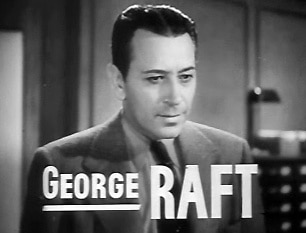
An even crazier story happened the following year when Siegel tried to sell explosives to Benito Mussolini. This unlikely business opportunity came courtesy of one of Siegel’s close friends in Hollywood, a rich heiress named Countess Dorothy di Frasso, who owned a lavish villa in Italy and was an acquaintance of the dictator through her husband. Bugsy and Dorothy had invested in a new type of explosive called “atomite” and she reasoned that Mussolini would make the perfect buyer for it. Siegel took a trip to Italy in 1939, but the new venture turned out to be a dud as Mussolini was unimpressed with the capabilities of atomite. On that occasion, Bugsy allegedly also met Hermann Goering, and disliked him so much that he wanted to shoot him, but was persuaded otherwise by the countess. As implausible as this whole story sounds, there is actually quite a lot of evidence to support the idea that Bugsy Siegel tried to sell atomite to Mussolini. The part about Goering, however, is mostly just hearsay.
These distractions made for entertaining stories but, for the most part, Bugsy stuck to what he was best at while in Los Angeles, as he ran gambling operations, narcotics, prostution rings, and extortion rackets. He still occasionally served as a gunman and, in 1940, he was charged with the murder of fellow mobster Harry Greenberg, aka “Big Greenie.” Although this became the most serious crime that Siegel was ever charged with, ultimately, he was not convicted due to insufficient evidence.
Viva Las Vegas
Although Bugsy Siegel was acquitted of Greenberg’s murder, all the media attention surrounding his trial made Hollywood stars a bit more apprehensive about associating with the mobster. However, this turned into the perfect opportunity for Siegel to look into a new business venture elsewhere.
Gambling had always been a good moneymaker for him and he went down to Nevada to acquire an interest in a racing publication called Trans America Wire. Siegel became increasingly engrossed with the idea of setting up shop in Las Vegas, and opening a luxury gambling resort for the rich & famous. He saw firsthand that such establishments were doing very well because, contrary to popular belief, Siegel’s hotel was not the first of its kind on the Las Vegas Strip, which back then was still simply called Highway 91. That honor belonged to El Rancho Vegas, which opened in 1941.
Initially, Siegel purchased the El Cortez Hotel & Casino in 1945 for $600,000. The current, newly-renovated Cortez even has a restaurant called “Siegel’s 1941” in honor of its notorious, one-time owner. However, Siegel found it problematic operating this hotel because local officials weren’t too happy about working with a mobster. Instead, Bugsy looked for something outside of their purview since, strictly speaking, the Vegas Strip technically only includes the part of the boulevard which is outside city limits.
Siegel found exactly what he was looking for in the form of the Flamingo Hotel being built outside Vegas by Billy Wilkerson, a Los Angeles nightclub owner and founder of the Hollywood Reporter. Wilkerson ran out of money for the project and needed new funding so he accepted Bugsy Siegel as his partner. Whether or not he had an actual say in the matter is uncertain, but Wilkerson eventually sold all his stakes in the hotel before it was finished. The Flamingo was now owned by the mob.
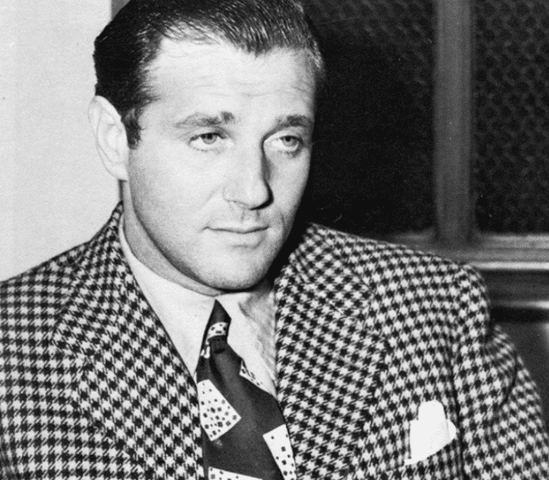
Siegel took over the building project and began enacting his vision of a luxury resort. Most of the other Las Vegas hotels were all done in a dude ranch style, but this was not good enough for Bugsy who wanted something classier. His hotel would have a modern decor, with a golf course and tennis courts, and everybody would dress in formal wear, including the staff who would wear tuxedos.
He convinced Meyer Lansky and other high-ranking mobsters that construction would cost between $1.2 and $1.5 million, but this was nowhere near the mark. By the time the hotel was actually finished, construction costs soared to over $6 million. Part of this was due to Siegel’s poor management and financial skills. Part of it was due to contractors taking advantage of his inexperience and conning him by charging double for materials. Part of it may have also been due to Siegel skimming off the top to pay for his own luxurious lifestyle.
The Flamingo Hotel had its grand opening on December 26, 1946, and it was a total disaster. For starters, the casino was open, but the actual hotel was still under construction. Siegel was hoping to draw in a lot of the Hollywood crowd to garner extra attention. He had band leader Xavier Cugat to provide music, while Jimmy Durante headlined the night’s entertainment. Some of his Hollywood pals like George Raft and Sonny Tufts were in attendance, but most celebs were kept away by a heavy downpour. Most of the people who did venture inside the casino seemed to have a hot hand because they won big and, with no rooms available, they cashed out their winnings and went someplace else. Within one week of opening, the Flamingo lost another $300,000.
This was really bad because Siegel had to know that he was in hot water with the syndicate due to his extreme overspending. His only saving grace was their belief that he could make the Flamingo profitable and return their investments, but now it seemed like that would not be the case. With no other option, Bugsy closed down the hotel two weeks after the grand opening and waited for construction to finish. It was reopened on March 1, 1947, this time renamed to the Fabulous Flamingo. It actually ended up turning a profit soon after, but even that was not enough to save Siegel.
The Moe Greene Special
Unbeknownst to Bugsy Siegel, he was a hot topic of discussion among the mob bosses of the day. In late December, 1946, another crime summit was held, just like the one in Atlantic City back in 1929. This time, it was held in Havana, Cuba, so Lucky Luciano could attend, as he had been deported to Italy earlier that year.
The meeting itself took place on December 22, at the Hotel Nacional de Cuba, and over 20 bosses were in attendance. Among the subjects of discussion was the “Siegel Situation,” as Meyer Lansky put it. Bugsy went way over budget on building the Flamingo, after persuading a lot of people to invest their money in it. Plus, everyone was pretty sure that he was also stealing, as his girlfriend Virginia Hill made frequent trips to Switzerland. There was concern that Bugsy was preparing to flee the country if things turned sideways so, ultimately, it was decided that he had to go. However, Meyer Lansky persuaded everyone to wait until the Flamingo opened, to see how well it did. They agreed but, as we already discussed, the opening went terrible. Even so, out of a sense of loyalty for his one-time close friend, Lansky tried to convince them again to wait a few more months, to see if Siegel could turn it around, but did he succeed?
On the night of June 20, 1947, Bugsy Siegel was sitting in the living room of the Beverly Hills mansion of Virginia Hill reading the newspaper, when he was shot multiple times with a .30 caliber rifle by an unknown gunman. Siegel was hit four times – two in the head and two in the chest. A popular story says that one bullet hit him in the eye – an execution dubbed the “Moe Greene Special” after the character in The Godfather who gets killed in the same way (a character who, by the way, was based on Bugsy Siegel). However, this wasn’t exactly how it happened, as the bullet did not actually hit Bugsy’s eye, but the force of the impact caused it to pop out.
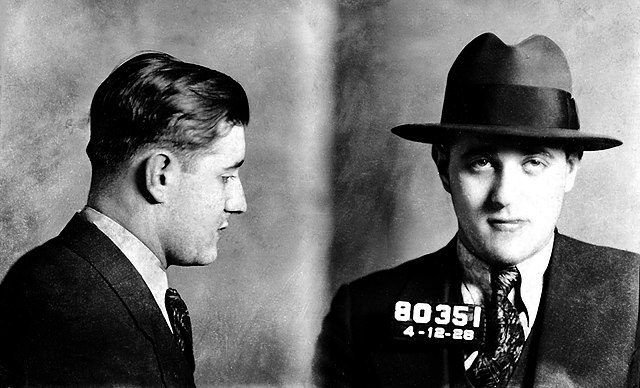
So, of course, the big questions are “Who did it?” and “Why?” The most obvious answer is that it was a mob hit. Due to the mismanagement of the casino, Siegel made too many powerful enemies, and Lansky couldn’t protect him forever. Many people are convinced this is what happened and, for them, the only mystery is who actually pulled the trigger. While this is more uncertain, the name most commonly brought up is Frankie Carbo, a gunman for Murder, Inc.
There are a couple of other theories, though. One says that the shooter was one of Virginia Hill’s brothers, taking revenge for the beatings that Siegel gave his sister. Another idea involves a strange love triangle consisting of mobster Moe Sedway, his wife Bea, and her lover Moose Pandza, and this one comes courtesy of Bea Sedway herself.
We mentioned Moe Sedway at the start of the video. He was part of Siegel’s teenage gang of criminals, so the two of them went way back, but their relationship soured heavily during the construction of the casino. Sedway was there to oversee Siegel’s spending, something which Bugsy greatly resented. Eventually, he’d had enough and wanted Moe dead. The latter found out about this and warned his wife that something might happen to him, to which she replied that she would ask Moose to protect him. So, according to Bea, it was Moose Pandza that night who gunned down Bugsy Siegel, in order to protect his lover’s husband.
Some of Lansky’s men, including Moe Sedway, took over operations of the Flamingo the day after Siegel’s death. As far as the mob was concerned, it was business as usual, and its involvement with the Vegas casinos lasted for decades to come and became one of its most profitable ventures. Bugsy Siegel might not have been “the man who invented Las Vegas,” as he is often called, but his legacy remains unique in the annals of crime and incomparable to that of any other gangster.

